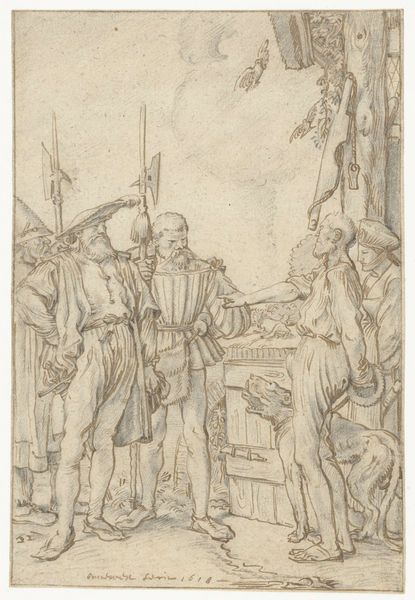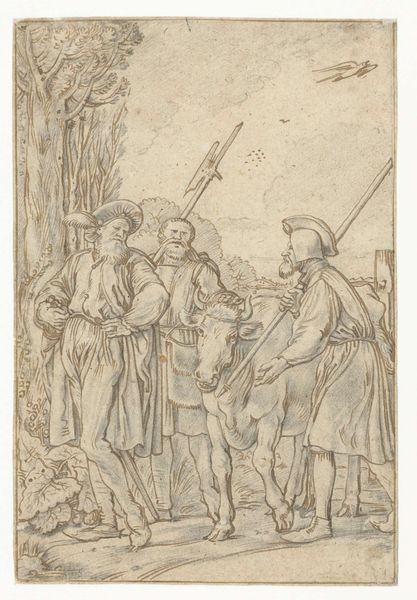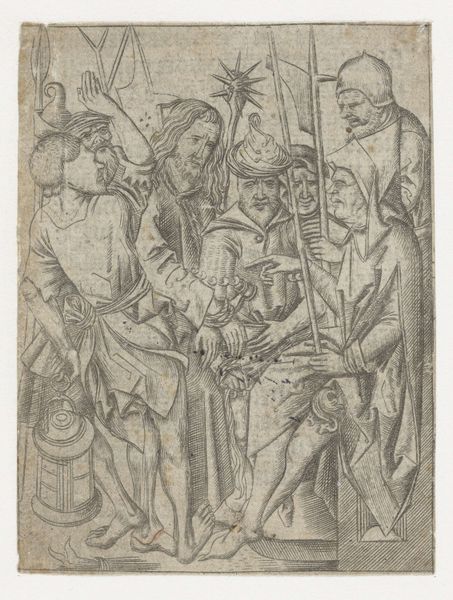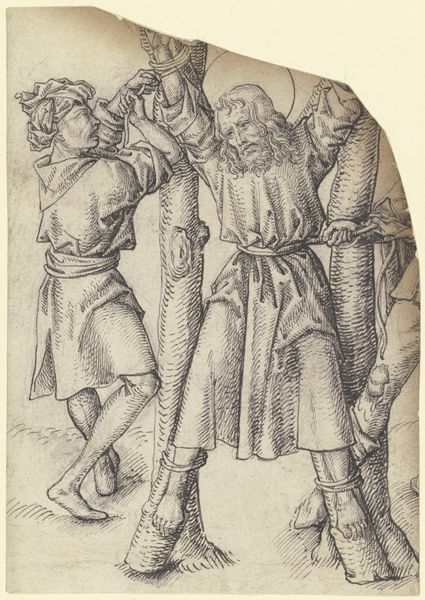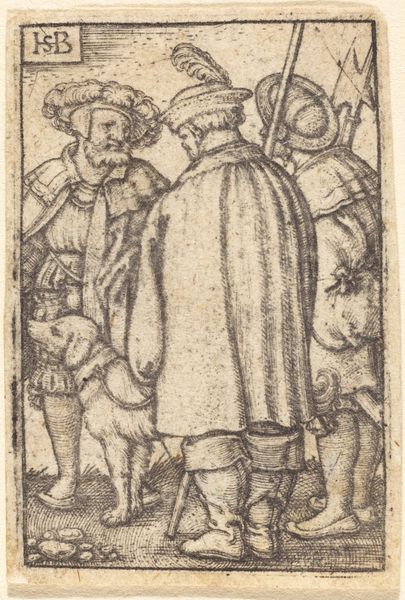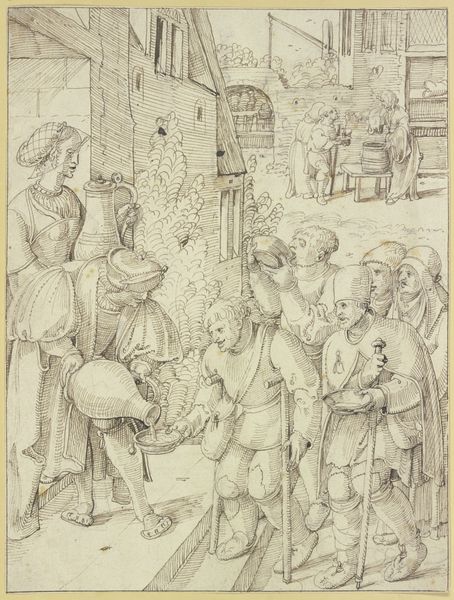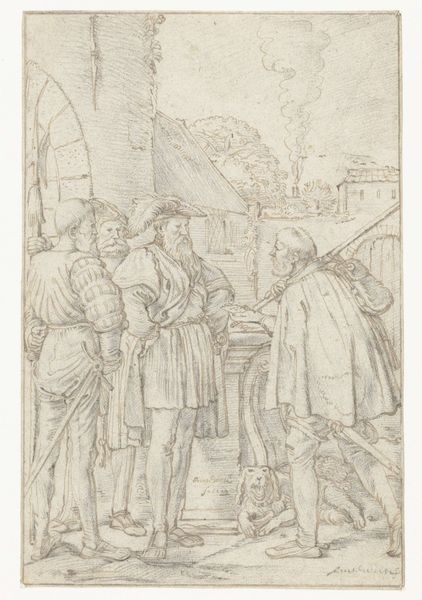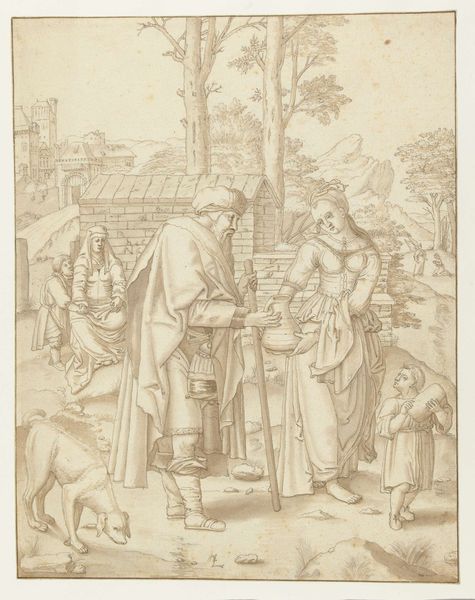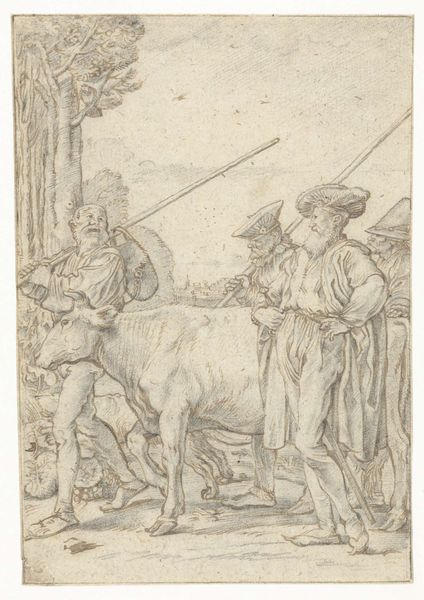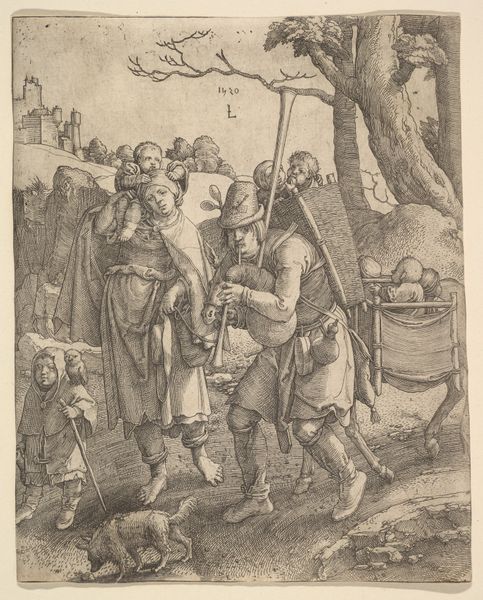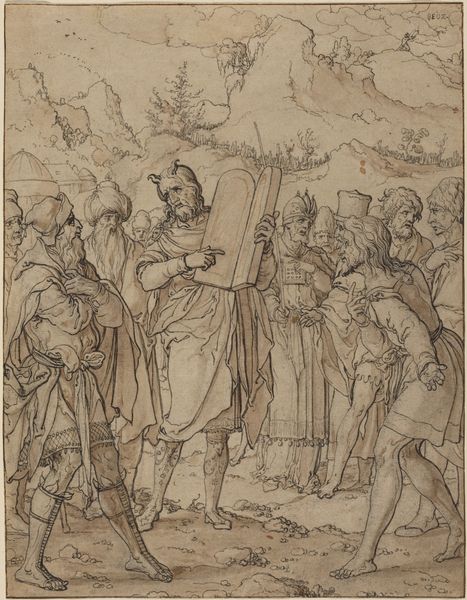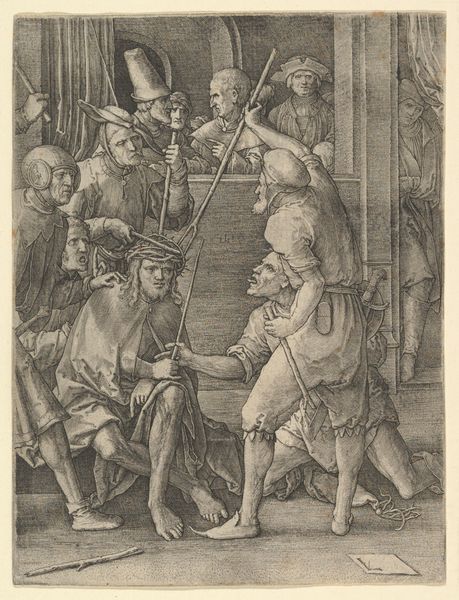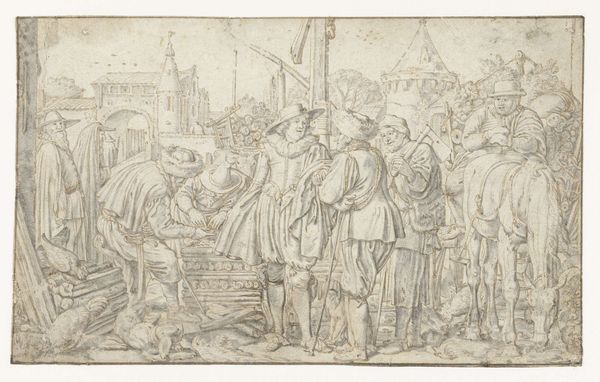
drawing, ink, pen
#
drawing
#
toned paper
#
dutch-golden-age
#
pen sketch
#
pencil sketch
#
personal sketchbook
#
ink
#
ink drawing experimentation
#
pen-ink sketch
#
pen work
#
sketchbook drawing
#
pen
#
genre-painting
#
storyboard and sketchbook work
#
sketchbook art
Dimensions: height 161 mm, width 108 mm
Copyright: Rijks Museum: Open Domain
Editor: Willem Buytewech's "Baljuw tracht de koe te kopen," created around 1619, is a delicate pen and ink drawing currently housed in the Rijksmuseum. There's a theatrical quality to the scene – like a play unfolding. I’m particularly intrigued by the contrast between the rough, almost caricatured figures of the officials, and the more subtly rendered civilians. What is your reading of this composition? Curator: It's a fascinating snapshot of social dynamics in the Dutch Golden Age. The drawing offers insights into the negotiation of power between local authority and the everyday lives of ordinary people. The 'Baljuw,' a kind of bailiff or law officer, is shown here seemingly in a transaction – the 'buying of the cow,' suggesting economic interaction but with undertones of potential coercion. Notice the setting: it is outside the civilians residence, putting the citizens at a distinct disadvantage. Editor: So you see the image as a commentary on the authority of the "Baljuw?" Curator: Exactly. Think about the context. The Dutch Republic was solidifying its identity. The burgeoning merchant class valued civic liberties. Images like these entered the cultural sphere during this transition, prompting us to wonder, 'how secure *are* rights when economics and legal frameworks have such disparities between them?' Is Buytewech subtly critiquing the potential for abuse of power by those in authority? Or merely representing it? Editor: The body language is certainly telling – the Baljuw’s rigid posture versus the looser stance of the farmers... It's not a straightforward image. Curator: No, it’s in these visual nuances that the drawing speaks volumes about the tensions present in Dutch society, and by displaying such social hierarchy within this piece, perhaps normalizes the inequality that the piece highlights, reflecting the broader cultural narratives around class and legal authority during that era. Editor: I see it now – there's so much social and political commentary packed into this seemingly simple drawing. Thanks! Curator: Indeed. And reflecting on this piece now makes me wonder if a contemporary viewer might regard the situation differently.
Comments
No comments
Be the first to comment and join the conversation on the ultimate creative platform.
